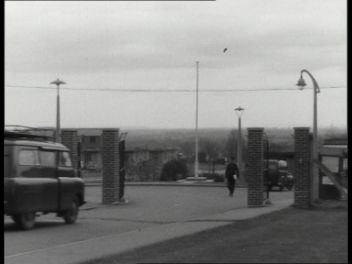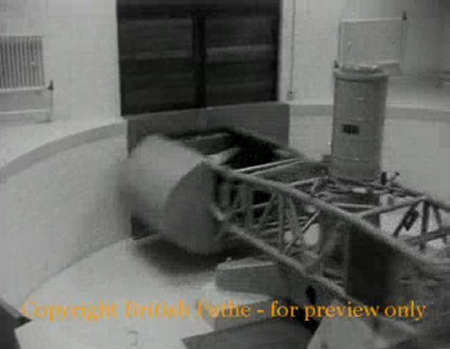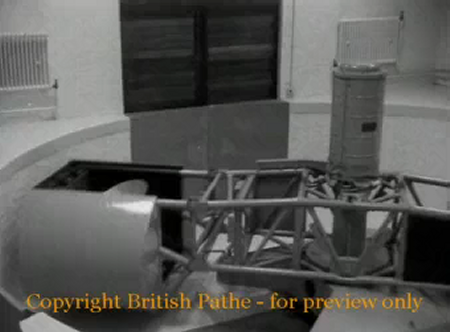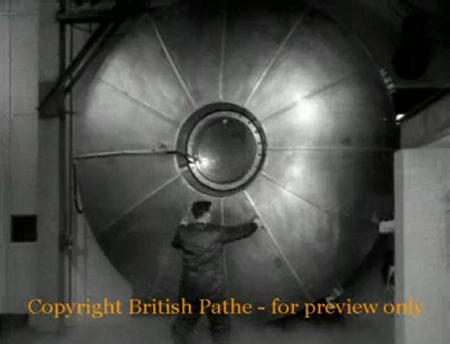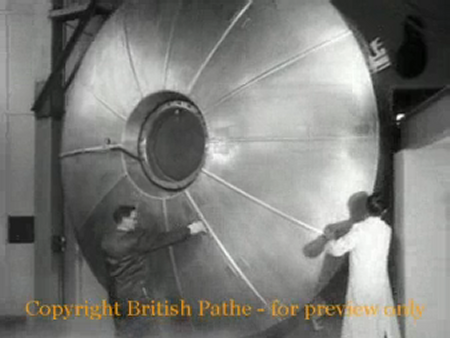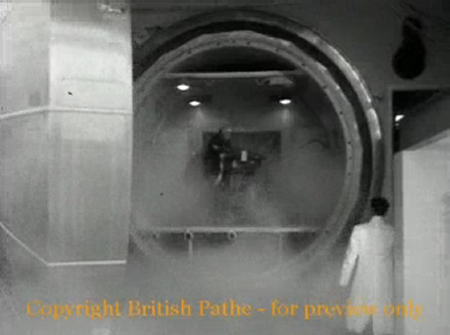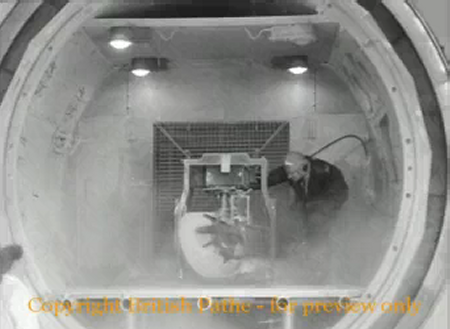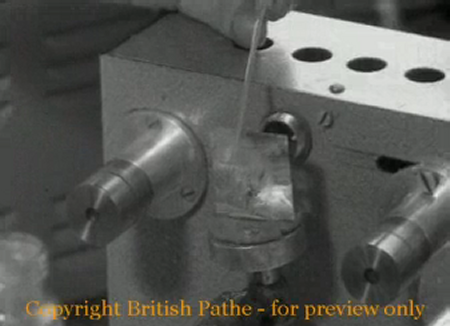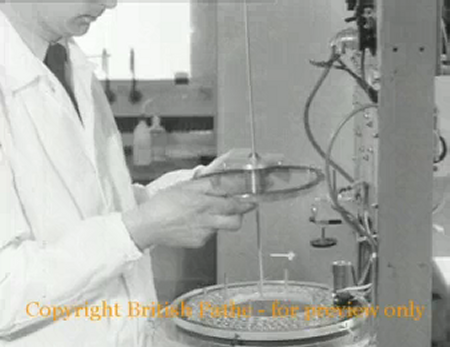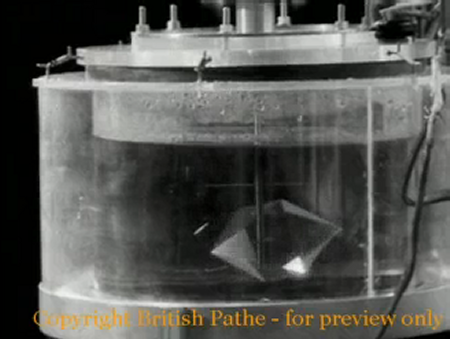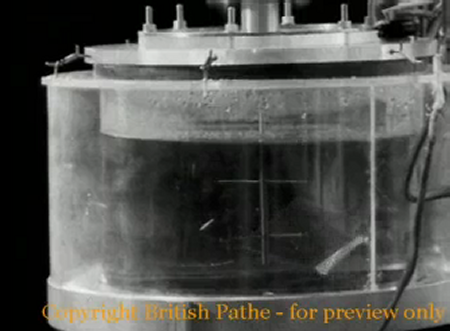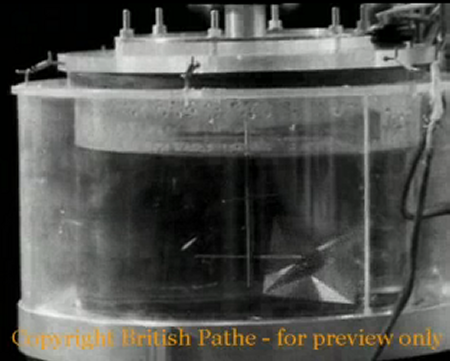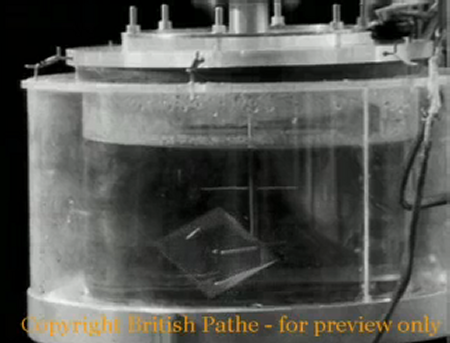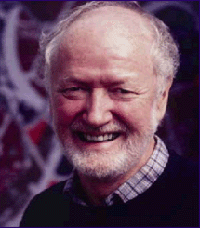|
European Incoherent Scatter Scientific Association |
|||||||||||||||
|
Malvern, Hereford and Worcester ..
Royal Radar Establishment at Malvern, Hereford and Worcester. LS Royal Radar Establishment entrance, car and lorry passing through. LS road leading to Royal Radar Establishment. CU Radar Scanner. Various interior of radar establishment showing scientists at work using different types of apparatus. Date on dope sheet is 22/04/1958. SOURCE: ROYAL RADAR ESTABLISHMENT video newsreel film
..
...
..
..
Seems there were a lot of very unusual and interesting experiments carried out at this station in the late 50's. Definitely worth looking into, especially those crystals. |
|||||||||||||||
|
..
Fellow and Councillor of the RAS, respected solar–terrestrial physicist and powerful advocate of EISCAT, Welsh political activist. Phil Williams With the sudden death of Phil Williams in June, the community lost a vigorous and charismatic figure who contributed much to solar–terrestrial physics and radio astronomy over a span of 40 years. He was born at Tredegar in the South Wales mining valleys, attended school at Bargoed, and throughout his life he was conscious of his Welsh heritage. He started his scientific career with a first at Cambridge and went on to postgraduate research at the Mullard Radio Astronomy Observatory at Lord's Bridge, Cambridge, receiving in 1964 his PhD for a thesis entitled “A study of radio sources at 38 Mc/s”. As a Fellow of Clare College and University Demonstrator in Physics, Phil stayed on a short time at Cambridge until 1967, when he joined the ionospheric group of Prof. Beynon at University College at Aberystwyth (now University of Wales, Aberystwyth). Apart from a spell at Kiruna in 1980–82, as Associate Director of Science of the European Incoherent Scatter organization (EISCAT), he was based for the rest of his scientific career at Aberystwyth, where he was appointed Professor of Solar–Terrestrial Physics in 1991. He served on the Council of the RAS from 1994 to 1997. Phil's scientific career was bound up with ionospheric incoherent scatter radar. The technique, devised by Bowles and Gordon in the USA, had been demonstrated in Illinois in 1957 and brilliantly applied in the 60s at a few sites, notably Jicamarca (Peru), Arecibo (Puerto Rico), Millstone Hill (Massachusetts) and Saint-Santin/Nançay (France). It measures density, temperature and velocity of ions and electrons throughout the ionosphere, in contrast to conventional ionospheric sounders that only measure electron density up to the ionospheric F2 peak. In Britain a powerful incoherent scatter radar began operating in 1968 at the (then) Royal Radar Establishment, Malvern, and was developed into a multistatic system, using as receiving sites the radio telescopes at Chilbolton, Hants, and Jodrell Bank “Mark III”. Phil's contribution was to move part of a large antenna, previously used at Lord's Bridge for the Cambridge 3C radio-source survey, and install it on a site near Aberystwyth. It completed the “MISCAT” system which, despite its relatively low power, was in 1972 the first incoherent scatter radar to measure three-dimensional drift velocities in the ionosphere. The EISCAT project was mooted in 1969, with sites north of the Arctic Circle at Tromsø, Kiruna and Sodankylä. After years of planning, construction went ahead in 1976 and operation began in 1981. Phil was a leading member of a band of British scientists who successfully made the case for joining EISCAT. In those days, the UK solar–terrestrial physics community comprised several groups of modest size, each with their specialist interests: the magnetosphere, aurora, airglow and its use for measuring ionospheric winds, radiowave absorption, beacon satellites, coherent radar, pulsations, computational modelling etc. With missionary zeal, Phil visited the various groups to bang the EISCAT drum, discuss how they might use EISCAT, and instruct them in the difficult topics of radar programming and data analysis. He had a particular flair for running training courses. All these activities helped the UK community to launch its highly successful EISCAT research programme that continues to this day. During his secondment to EISCAT, Phil's experiments had tested the new system with a thoroughness that resolved many a problem, real or potential. This technical familiarity with EISCAT served him well in his own subsequent research, which embraced all the major layers of the ionosphere. In the 90s Phil played a major role in using EISCAT in quite a different way: studying the solar wind by analysing the scintillations it causes in signals from distant quasi-stellar radio sources. This technique has the operational advantage of using the EISCAT system only for receiving, and is thus independent of limitations on the usage of the transmitters. It has added greatly to knowledge of the solar wind. He was also a leading protagonist of the EISCAT Svalbard Radar, which was commissioned in 1996. Phil's involvement in politics was a big part of his life. As a leading member of Plaid Cymru, of which he was Vice-President for several years, he stood six times for the Westminster Parliament and twice for the European Parliament, being finally rewarded in 1999 by election to a seat in the Welsh Assembly. In recent years his political activities had taken precedence over his science, and it was tragic that he was struck down with a heart attack just as his beloved science was once again taking priority. Phil is greatly missed. He knew how to enjoy life. He had many interests, to all of which he applied his infectious enthusiasm and energy. Our sympathy goes out to Ann, his wife of more than 40 years, and his son and daughter. Henry Rishbeth SOURCE: P J S Williams 1939–2003 |
|||||||||||||||
| FAIR USE NOTICE: This page contains copyrighted material the use of which has not been specifically authorized by the copyright owner. Pegasus Research Consortium distributes this material without profit to those who have expressed a prior interest in receiving the included information for research and educational purposes. We believe this constitutes a fair use of any such copyrighted material as provided for in 17 U.S.C § 107. If you wish to use copyrighted material from this site for purposes of your own that go beyond fair use, you must obtain permission from the copyright owner. | |||||||||||||||
|
|
